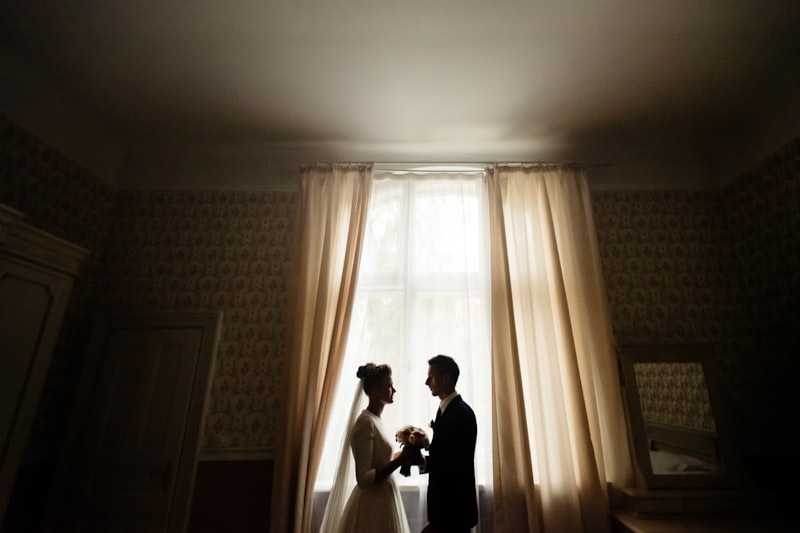Exploring Revenue Streams in the Bridal Market: Unlocking Profits in the Wedding Industry
Exploring Revenue Streams in the Bridal Market: Unlocking Profits in the Wedding Industry
The bridal market has evolved into a multi-billion-dollar industry, encompassing a wide range of services and products that cater to the dreams and fantasies of brides-to-be. Understanding the various revenue streams in this lucrative market can give business owners insights into how to maximize their profits. In this article, we will delve into the primary revenue streams in the bridal market while providing valuable tips and insights along the way.
The Scope of the Bridal Market
As weddings continue to be one of the most significant life events, the demand for bridal services has soared. The global bridal market includes everything from wedding dresses, jewelry, and venues to photography, catering, and entertainment. By breaking down the different segments, businesses can effectively target their marketing strategies.
Key Revenue Streams in the Bridal Market
| Revenue Stream | Description | Potential Earnings |
| Bridal Gowns | Sales of wedding dresses, often the most significant expense for brides. | $1,000 - $5,000+ |
| Veils and Accessories | Additional items complementing the bridal gown. | $100 - $1,000 |
| Venue Rentals | Spaces for ceremonies and receptions. | $2,000 - $20,000+ |
| Catering | Food and beverage services for the wedding event. | $50 - $200 per guest |
| Photography and Videography | Capturing memories through professional services. | $1,500 - $5,000+ |
| Floral Arrangements | Flowers for decoration and bouquets. | $500 - $3,000 |
| Entertainment | Music and performances to enhance the celebration. | $1,000 - $10,000+ |
| Wedding Planning Services | Coordinating all aspects of the wedding. | $1,500 - $10,000 |
Detailed Breakdown of Revenue Streams
The bridal gown is often the centerpiece of any wedding. With designers pushing creative boundaries, prices for bridal gowns can vary significantly based on brand, fabric, and craftsmanship. Understanding customer preferences and offering customization options can lead to higher sales.

In addition to the gown, bridal accessories such as veils, jewelry, and shoes can contribute significantly to revenue. Customers often look for the complete bridal look, making it essential for retailers to offer a comprehensive selection.
Venue rentals make up another substantial revenue stream in the bridal market. Couples often prioritize unique and picturesque locations, driving up demand for exclusive venues. Factors such as location, capacity, and amenities can all influence pricing strategies here.
Exploring Catering Opportunities
Catering is another crucial aspect of wedding planning, with food and beverages often being one of the most significant expenses for couples. The average cost typically ranges between $50 to $200 per guest, depending on the type of cuisine, service style, and number of courses. To remain competitive, catering businesses can offer menu tastings, customizable options, and packages that include both food and beverage services.
Photography and Videography Services
Capturing precious memories is a high priority for couples, which creates a robust market for photography and videography. With packages ranging from $1,500 to $5,000 or more, businesses should focus on showcasing their unique styles and previous work to attract clients. Providing both photography and videography services as bundled packages might further enhance profitability.
The Importance of Floral Arrangements
Flowers play a significant role in weddings, helping to create the desired atmosphere. From bouquets to centerpieces, floral arrangements can be customized to reflect the couple's theme and preferences. Floral businesses can also offer subscription packages for brides wanting fresh flowers for their events leading up to the big day.
Entertainment Options for Weddings
Entertainment is crucial in keeping guests engaged during the event. From live bands to DJs, the cost of hiring entertainment can range from $1,000 to $10,000, depending on the performers' popularity and duration of service. Wedding planners and venues often collaborate with entertainment providers to create attractive packages for couples.
Wedding Planning Services
The complexity of planning a wedding drives the demand for professional wedding planners. These services not only help in organizing the event but also provide access to preferred vendor lists, resulting in additional revenue streams as planners often receive commissions from vendors.
Emerging Trends in the Bridal Market
As consumer preferences evolve, it's crucial to stay ahead of emerging trends. Sustainable weddings, DIY options, and intimate elopements are becoming increasingly popular. Incorporating these trends into your business model can attract a new audience and diversify revenue streams.
Conclusion: Maximizing Revenue in the Bridal Market
In conclusion, the bridal market offers a wealth of opportunities across various revenue streams, including bridal gowns, venues, catering, photography, floral arrangements, entertainment, and planning services. By understanding each segment and adapting to changing trends, businesses can optimize their services to better meet the needs of engaged couples. As the industry continues to evolve, staying informed and agile will position businesses to capture the growing demand and enhance profitability.
Before venturing into the bridal market, consider the following: conduct thorough market research, remain flexible to changing consumer tastes, and invest in exceptional customer service to create a memorable experience for brides and their families. Emphasizing collaboration with other vendors can also streamline services and expand your offerings. By following these strategies, businesses in the bridal market can build a sustainable revenue stream while catering to the dreams of brides around the world.
